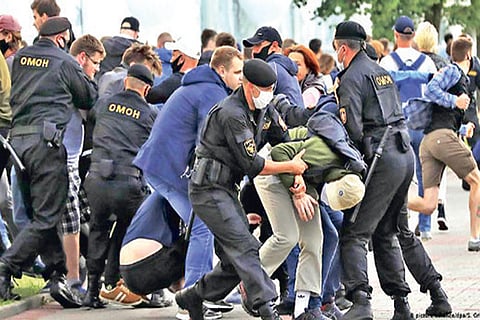

Chennai
The study is based on extensive interviews with 20 journalists from 18 countries, with Daphne Caruana Galizia, who was murdered only days later, Can Dundar and Jessikka Aro. It exemplifies and analyses undue pressure exerted against journalists in Europe to prevent them from reporting freely. It also highlights the strategies those journalists use to overcome fear and continue to fulfill their mission to serve the public with unbiased information in what the authors call “a veritable minefield of obstacles and dangers” and a “dramatic intensification of political pressure [that] has increasingly hindered and obstructed journalists from performing their core watchdog function.”
According to Patrick Penninckx, head of Information Society Department of the Council of Europe, the situation for journalists has worsened in the past years as journalists often work in an environment generally “not favourable to freedom of expression.” The current COVID-19 pandemic also makes journalists “particularly vulnerable to pressures and intimidation” when critically reporting on the health crisis. “The Council of Europe has repeatedly emphasized that the COVID-19 crisis should not be used by state or non-state actors as a pretext to limit media freedom in a way that would not be acceptable in regular circumstances,” Penninckx added.
More visible and vulnerable
The list of obstacles hindering journalists’ reporting on sensitive matters is long. It includes and isn’t limited to “commercial pressures, pressures from their own editors, fear of frivolous legal claims against them, surveillance, the misuse of terrorism and other laws sanctioning them for reporting on certain issues, obstacles hindering access to information as well as direct threats of harm and injury directed against journalists or their close ones,” Penninckx told DW. The spread of misinformation also contributes to a hostile environment for journalists, the Council of Europe report shows. In our highly digitalised lives and through social media, journalists become “more visible and easily reachable,” making them “more vulnerable to denigrating comments,” Penninckx said.
Female journalists particularly experience severe harassment online. “If a woman is going to be less than perfect, she’s going to get trashed,” Daphne Caruana Galizia said in her interview in October 2017. Finnish journalist Jessikka Aro stated that, “being a female, I am subjected to horrible harassment concerning how I look, and how sexually wanted or not wanted I am. [Some trolls say they] want to rape me.”
However, the harassment isn’t solely limited to words: Elena Kostyuchenko, a reporter for the Russian newspaper Novaya Gazeta, recalls several incidents of physical aggression against her as a critical reporter. She obtained head traumas because of brutal attacks, yet, “no investigation or criminal case” happened at all, she says. Daphne Caruana Galizia, who had been reporting on corruption in the highest levels of the Maltese government, was brutally murdered with a car bomb only days after her 2017 interview for the study.
Systematic intimidation and harassment of journalists also increase the risk of self-censorship, as the interviewees have testified. “It is clear that different pressures faced by journalists push them to self-censor and that self-censoring happens even amongst the bravest and most reputable members of the profession,” said Penninckx. Daphne Caruana Galizia said that many journalists experience living in a “climate of fear. People are afraid of the consequences.”
— This article has been provided by Deutsche Welle
Visit news.dtnext.in to explore our interactive epaper!
Download the DT Next app for more exciting features!
Click here for iOS
Click here for Android